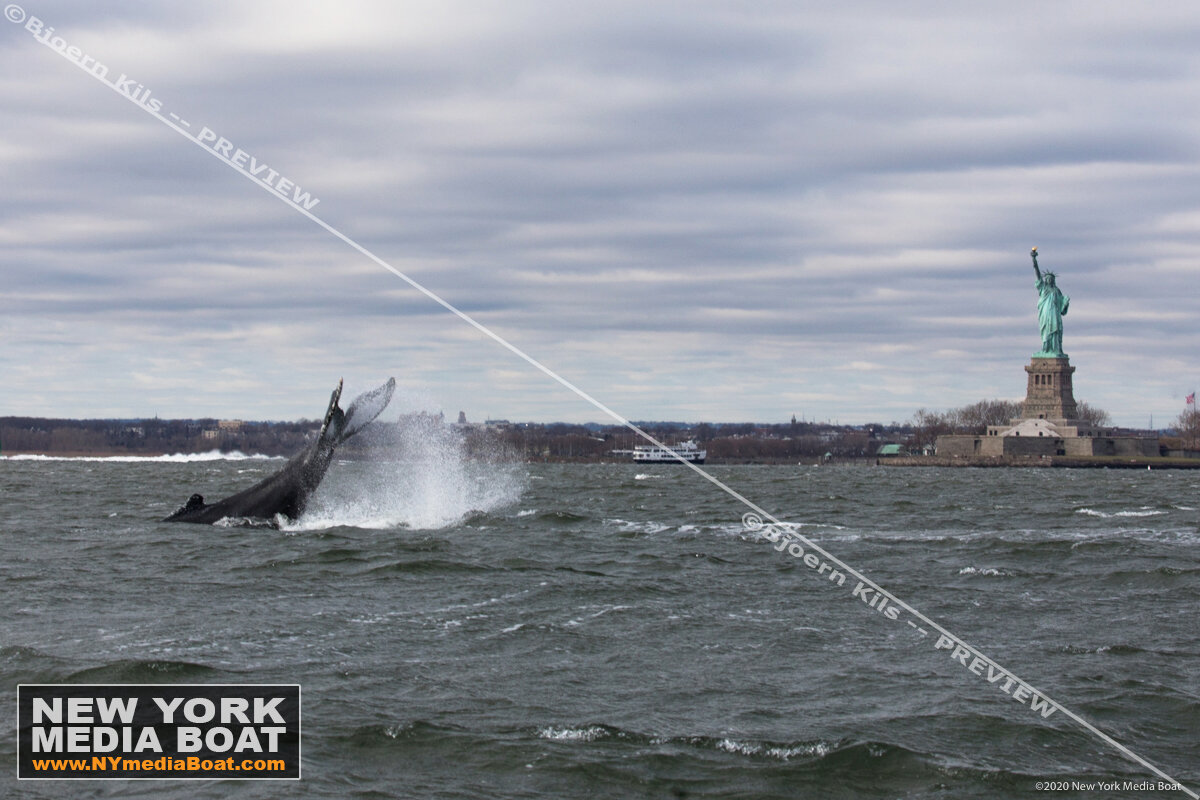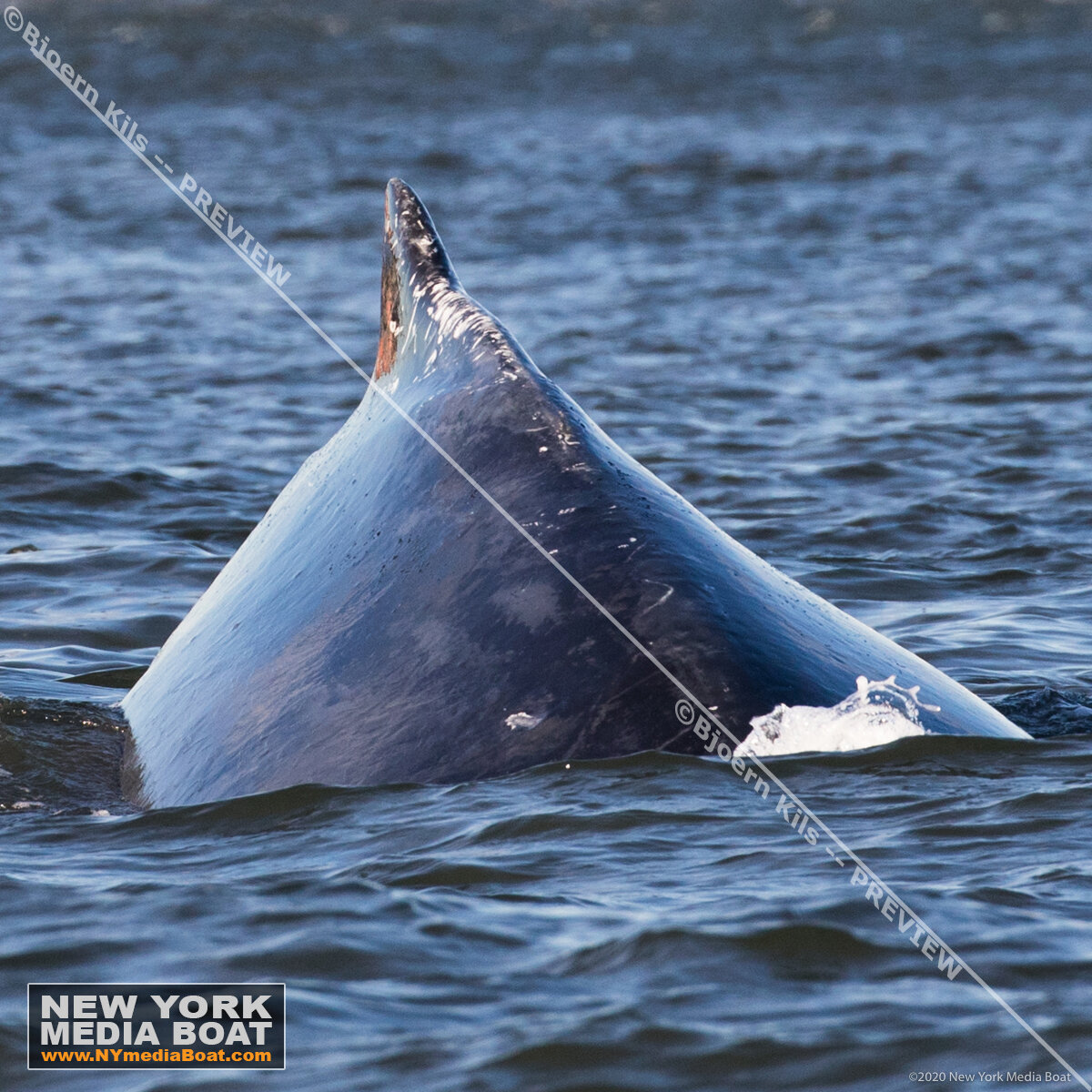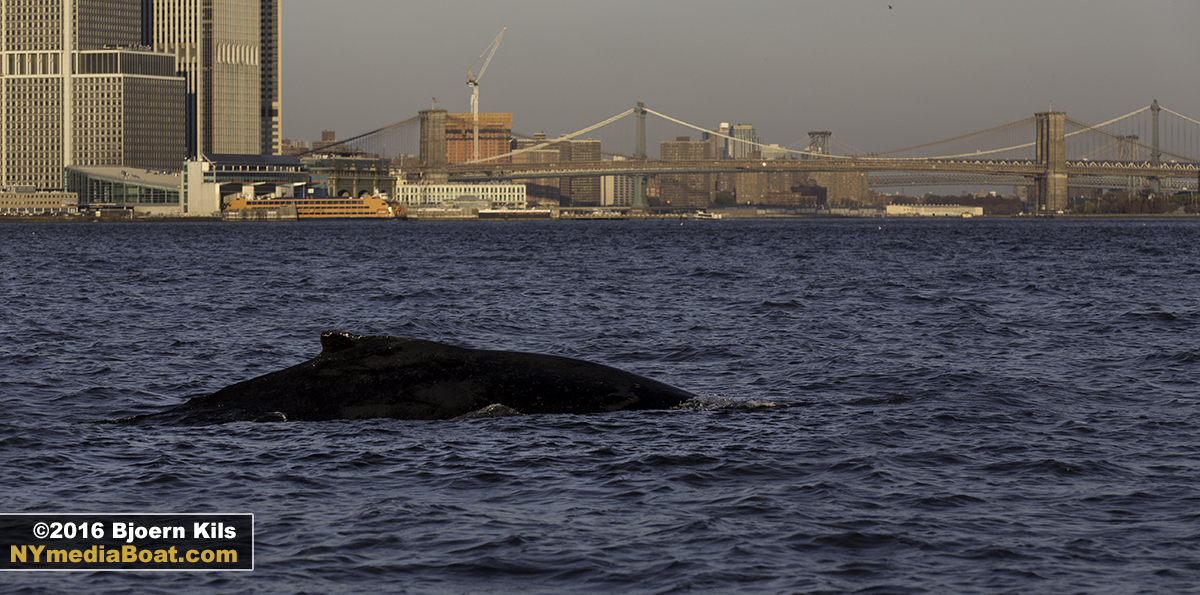The humpback whale that’s been cruising the Hudson River likely got lost after chasing baitfish, according to NOAA experts.
There’s probably not enough food upriver, and chances are the whale is ‘lost,’ said Jennifer Goebel, a spokesperson for NOAA Fisheries Greater Atlantic Region.
It doesn’t appear to be in danger, so NOAA doesn’t plan to intervene at this time.
But that could change if the health of the animal declines, or if the location ends up posing a danger, Goebel said, acknowledging that the whale is certainly a hazard to navigation in busy New York Harbor.
The whale is likely a juvenile or a young adult, and concerns about it ‘missing its migration’ are unfounded, Goebel said.
While adult animals move to tropical breeding grounds in the winter, younger whales don’t always make the entire journey because they’re not reproductively active, and there’s less for them to eat down there.
Indeed, there’s some evidence that a number of juveniles overwinter in the mid-Atlantic, where they continue to feed and grow, Goebel said.
Even adult humpbacks have been reported to migrate later in the season, remaining off New York and New Jersey into late fall, and overwintering in the mid-Atlantic, she added.
There are 14 subtypes of humpback, and it’s not clear which one this whale belongs to. Four subpopulations are endangered, and one is threatened, but none of these live in the coastal waters off North America.
While the North Atlantic humpback population was estimated to bottom-out at 700 animals between 1865 and 1980, today NOAA estimates that there are 12,000 humpbacks swimming through its waters at any given time.
Many New Yorkers will be anxiously waiting to see if this animal finds his way back to his flourishing population.






































